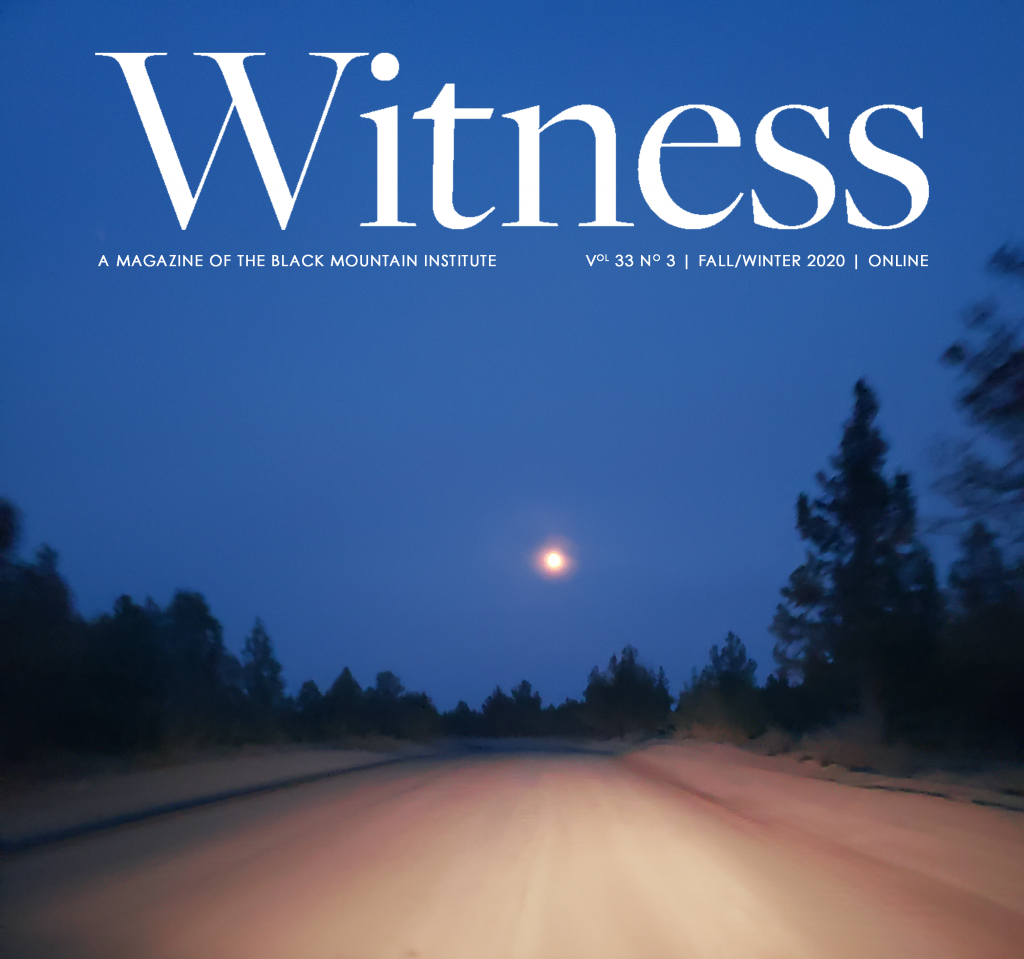I.
Vinton County, Ohio: The winter has ended, but the change of season is a dangerous time here in this poor, rural area of Appalachian Ohio. Melting snow has saturated the clay soil. Now it has been raining without end for days and the water has nowhere to go. The big state river to the south and east bursts its chest and overflows its banks; tiny roadside creeks spill over into every curve and valley and fill the county with water. On one flooded road, a man steps out of his used Toyota to test the way. The top layer of water is calm, a long puddle from shoulder to shoulder. What he cannot see—what cannot be seen, only felt, and then it is too late—is the low, determined current, a temporary riptide. He steps in, knee deep, and feels it brush his ankles. He lifts a hand, as if reaching for something on a high shelf. Then he buckles and goes down. This is drowning.
At the same time, just a few miles away, my young son and I are out in the rainy night to find the spotted salamander. This is a yearly ritual, undertaken with raincoats and flashlights, when we leave our comfortable house, the comfortable college town where I teach, to experience some wildlife. The state forest, when we enter, is always more than a little frightening. Frog sounds assault the ear. The forest is thick and dark and impenetrable. We stick to the road and do not venture too far astray. The amphibians are out; this is their world.
II.
Ambystoma maculatum—Latin for spots. Spotted salamanders lead very solitary lives, eating, sleeping, and hibernating alone in moist underground burrows. Once a year they emerge to breed. It must be late winter; there must be a warm rain. Protected by darkness, they crawl in search of shallow, temporary breeding pools. There they court, mate—a bit of frenetic socializing that produces a thick gelatinous bubble of two hundred eggs. Then they return, alone, each to its hole.
For nine months in the womb, my son’s world was wet. He floated, he could not drown. His shape was fishlike and he was hooked by the belly to his mother. He grew, he tilted downward. At the end, there were the hindwaters above him and the forewaters below. He splashed through and was born.
III.
The way can be hazardous. The human need—our need—for paved roads and drainage separate the salamanders from their breeding pools. There is a road; they cross it. They can be killed easily during this time. We can kill them—our clumsy vehicles are not made for this. We drive very slowly. We keep our headlights on. If you get deep enough into the forest, there will be a thousand sticks on the road. These are not sticks.
There can be too much fluid—or more often, too little. Dry inside, the cord compresses, lungs collapse, muscles waste, feet club. There is a test for this. There is a test for nearly everything. Sometimes it feels better not to know.
IV.
The spotted salamander’s nearest relative is the Jefferson’s salamander. Its body is ash-gray and its spots silverish but subdued. Strong intercostal muscles run the length of its torso, designed for quick, low movement. The Jefferson’s salamander is rare here in southeastern Ohio; finding one is a rarity even for local naturalists, who can go years without seeing one. That night, my son and I spot two, hold them wriggling under our flashlights, then carry them across the road and watch as they separate. Each is not what the other was looking for.
All night, the waters are gaining. We go down a hill and the road ends, abruptly, swallowed by the rains. The flood is coming toward us. We step into the rising water, stare into the prehistoric darkness. Was there ever a road there?
V.
Neighbor: I was standing on my porch watching the water rise. I don’t usually start worrying until it gets to the garage in front of the house. I saw a man step out of his car and wade into the water. He raised his hand. I thought he was waving to me.
In the back seat, my son taps the glass with the flat of his hand. We are driving quickly now, headlights burning into the darkness, trying to stay away from the flood. We go up and down the rural roads, hitting water with each dip in the road. I open the door and watch the water on the roadbed, watch it climb over the tires and toward my feet. I put my hand out, palm down, to hold the flood back. I glance in the rearview mirror and catch my son’s eye. He waves to me.
Stevie Smith: Not waving but drowning.
VI.
The way home is long with many detours. We arrive soaked through our raincoats and bone tired and my son climbs into bed with his mother. She has been waiting, kept awake by the storm. My son tells her about the spotted salamander, how it writhed in his palm and darted up his sleeve, looking for the warm places. He is a question mark, little more than a salamander himself, a tiny wriggling thing. He falls asleep and I cover him with a blanket. I think, he is safe he is safe he is safe. Rain pings the windows and crawls down the walls of our old house.
A few miles away, a man falls and is carried by water.







